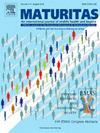Exploring the link between the use of oral contraceptives and intrauterine devices, and alcohol consumption in young Danish women
IF 3.6
2区 医学
Q2 GERIATRICS & GERONTOLOGY
引用次数: 0
Abstract
Objective
This study aimed to identify potential differences in alcohol consumption and craving among users of combined oral contraceptives (COCs), intrauterine devices (IUDs), and naturally cycling (NC) women. Previous studies have often grouped COC and IUD users together, and so potentially overlooked behavioural differences between these two groups.
Study design
We conducted a cross-sectional observational study, collecting data from 101 Danish women aged 20–30 through a web-based survey.
Main outcome measures
Participants provided demographic information, details on use of hormonal contraceptives (HCs), menstrual history, and self-reported alcohol consumption. Additionally, the participants completed the Alcohol Use Disorders Identification Test (AUDIT) and the Alcohol Craving Questionnaire-Short Form-Revised (ACQ-SF-R).
Results
All participants reported alcohol consumption and were well matched in age, body mass index (BMI), and education. A higher proportion of IUD users were smokers, but the difference in smoking rates among the groups were not statistically significant. One-way ANOVA revealed significant differences in alcohol consumption among the groups, with IUD users consuming more alcohol than NC women and COC users. No significant differences in alcohol consumption were found between NC women and COC users. While there were trends towards higher AUDIT and ACQ-SF-R scores among IUD users, these differences did not reach statistical significance across the groups.
Conclusion
IUD users reported higher alcohol consumption than both COC users and NC women, while no substantial differences were observed between NC women and COC users. These findings provide valuable insights into the correlation between contraceptive methods and alcohol use. Although causality cannot be inferred, the results may aid healthcare professionals in developing tailored counselling strategies and identifying women who may be at increased risk of alcohol abuse.
探讨丹麦年轻妇女口服避孕药和宫内节育器的使用与饮酒之间的联系
目的本研究旨在确定复方口服避孕药(COCs)、宫内节育器(iud)和自然周期(NC)女性在酒精消费和渴望方面的潜在差异。以前的研究经常将COC和宫内节育器使用者归为一类,因此可能忽略了这两组之间的行为差异。研究设计我们进行了一项横断面观察性研究,通过网络调查收集了101名20-30岁丹麦女性的数据。主要结果测量:参与者提供了人口统计信息、使用激素避孕药(hc)的详细情况、月经史和自我报告的饮酒情况。此外,参与者还完成了酒精使用障碍识别测试(AUDIT)和酒精渴望问卷-简表修订(ACQ-SF-R)。结果所有参与者都报告了饮酒情况,并且在年龄、体重指数(BMI)和教育程度上都很匹配。宫内节育器使用者中吸烟者的比例较高,但组间吸烟率差异无统计学意义。单因素方差分析显示各组之间的酒精消费量存在显著差异,宫内节育器使用者比NC妇女和COC使用者消耗更多的酒精。NC妇女和COC使用者之间的酒精消费量没有显著差异。虽然宫内节育器使用者的AUDIT和ACQ-SF-R得分有较高的趋势,但这些差异在各组之间没有统计学意义。结论:宫内节育器使用者报告的饮酒量高于COC使用者和NC女性,而NC女性和COC使用者之间没有明显差异。这些发现为避孕方法和酒精使用之间的相关性提供了有价值的见解。虽然不能推断出因果关系,但研究结果可能有助于保健专业人员制定量身定制的咨询策略,并确定酗酒风险可能增加的妇女。
本文章由计算机程序翻译,如有差异,请以英文原文为准。
求助全文
约1分钟内获得全文
求助全文
来源期刊

Maturitas
医学-妇产科学
CiteScore
9.10
自引率
2.00%
发文量
142
审稿时长
40 days
期刊介绍:
Maturitas is an international multidisciplinary peer reviewed scientific journal of midlife health and beyond publishing original research, reviews, consensus statements and guidelines, and mini-reviews. The journal provides a forum for all aspects of postreproductive health in both genders ranging from basic science to health and social care.
Topic areas include:• Aging• Alternative and Complementary medicines• Arthritis and Bone Health• Cancer• Cardiovascular Health• Cognitive and Physical Functioning• Epidemiology, health and social care• Gynecology/ Reproductive Endocrinology• Nutrition/ Obesity Diabetes/ Metabolic Syndrome• Menopause, Ovarian Aging• Mental Health• Pharmacology• Sexuality• Quality of Life
 求助内容:
求助内容: 应助结果提醒方式:
应助结果提醒方式:


